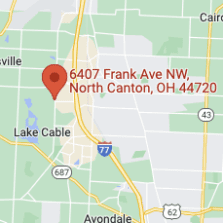What is Low Vision?
Low vision is vision that is not corrected by eyeglasses, contact lens, medication, or surgery. If you are unable to read, recognize faces, separate colors, or view your TV or computer clearly, you may have low vision. A comprehensive eye examination would be needed to determine if your vision can be corrected optically or with surgery.
A low vision examination is an optical and functional evaluation to determine whether the patient’s vision can be enhanced to enable the patient to participate in desired activities. This assessment will determine your amount of vision loss and identify the best ways to maximize your remaining vision. Some causes of low vision can be age-related macular degeneration, diabetic retinopathy, and/or glaucoma. The areas of vision loss for low vision patients can be central vision loss, peripheral vision loss, night blindness, or blurry vision. Some of the common low vision aiding devices are glasses, telescopic lenses, magnifiers, and electronic devices.
New Technology For Low Vision Patients
There is new electronic technology that a low vision patient can use at home to read a book or magazine with better clarity and ease. The older CCTV was too costly for many patients. However, new technological devices are priced significantly less, making them more available for patients to purchase.
A group of aiding devices are electronic portable video magnifiers, which includes the Smartlux Digital, Visolux Digital HD, and the Visolux digital XL FHD (distributed by Eschenbach).
- The Smartlux Digital, the smaller unit, is great for scanning items, while the two larger devices make it easier than ever to read a book or magazine.
- The Visolux Digital HD has a Dynamic Line Scrolling (DLS) feature that enables scrolling from side to side.
- The Visolux Digital XL FHD is the largest unit and has a Dynamic Line Scrolling (DLS) feature that allows the user to scroll both horizontally and vertically on higher magnifications. Both units allow the user to physically move the device less while reading.
The Visolux Digital XL FHD and Visolux Digital HD, the two larger devices, also have an attachable base accessory that provides increased distance from the screen to the paper that is being viewed. This allows the user to more easily write underneath the device. These products can also take an image from its screen and project it onto a computer or television screen.
With this technology, patients are required to physically move these devices less while reading. They will be able to find the optical clarity of an image at the lower magnifications very clear, allowing patients with reduced vision to read print with nearly 20/20 vision.
| LCD display | Magnification | Magnification | |
|---|---|---|---|
| Smartlux Digital | 5” LCD TFT screen | 5x, 7x, 9x, 12x | 2 SMD LEDs |
| Visolux Digital HD | 7” LCD screen | 2x to 22x in steps or continuous zoom | LED with 3 brightness settings |
| Visolux Digital XL-FHD | 12” TFT LCD screen | 2x to 22x in steps or continuous zoom | LED with 3 brightness settings |
These units are offered at a reduced price so that people with low vision can own a personal video magnifier in their home. The world of low vision is improving with the help of new technology.
Mobile Apps for Low Vision Patients
In addition to portable magnifiers, a patient with low vision can also download apps to their smartphone to better navigate the online world, read and view messages and documents, improve shopping, and assist in completing daily activities. These adaptions to a mobile device can make daily living much easier.
VoiceOver
This app is used to navigate an iPhone screen and access the touch features that sighted people easily use by providing speech output and screen magnification. Voiceover can help with activities such as web browsing, email, listening to music, and word processing. A braille keyboard is also included. There are also display features that offer the ability to invert colors or choose different color filters. Zoom magnifies the picture on the screen, and the Speak Screen reads texts, email, books, and website pages. The VoiceOver Image Recognition interprets images and shares a description.
Seeing Al
This application uses artificial intelligence to describe the world by interpreting people, texts, and objects. The camera tells the user what is being seen by reading the document, text, or handwritten note, describing the money seen, or scanning barcodes to identify an item. The person feature helps users identify friends and objects.
Be My Eyes
Although this application is not free, it can be very useful for an independent low-sighted person. By using a live video call, a visually impaired individual can work with a sighted volunteer to complete a task. The volunteer could help you read a thermostat, read a recipe, set up a computer, read bus routes, or match clothing.
Sources Cited
- The Art and Practice of Low Vision, by Paul B. Freeman and Randall T. Jose, Butterworth-Heinemann, 1997.
- “Low Vision.” National Eye Institute, U.S. Department of Health and Human Services, www.nei.nih.gov/learn-about-eye-health/eye-conditions-and-diseases/low-vision.
- “Smartlux Digital.” Magnifier | Video Magnifier | Eschenbach Optik, www.eschenbach.com/products/video-magnifiers-hand-held-smartlux-digital.asp.
- “Visolux Digital XL FHD.” Portable Video Magnifier | Eschenbach Optik, www.eschenbach.com/products/video-magnifiers-hand-held-visolux-digital-xl.asp.
- Ou, Yvonne, and University of California. “Apps for People with Low Vision.” BrightFocus Foundation, 16 Aug. 2019, www.brightfocus.org/glaucoma/article/two-apps-people-low-vision.















Recent Comments